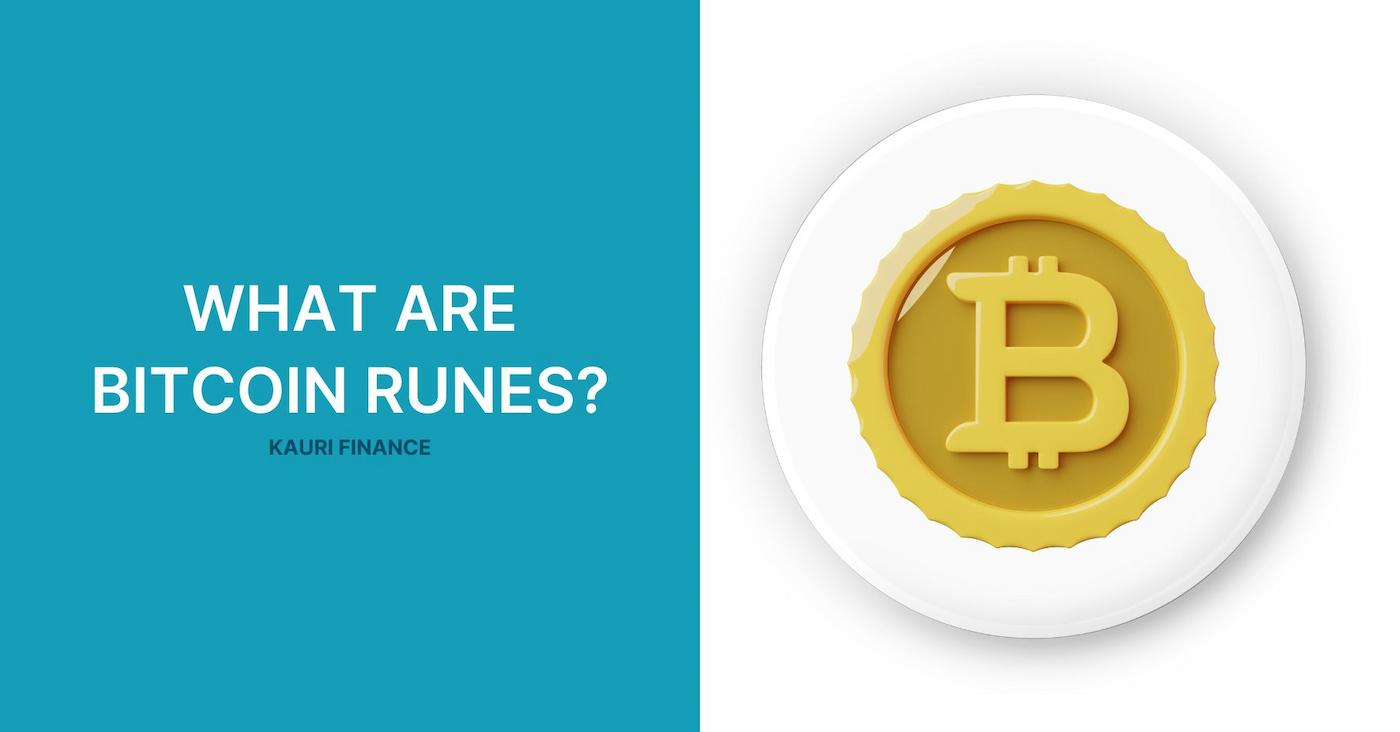
What are Bitcoin Runes?

Since its inception, bitcoin has been viewed primarily as digital gold, a secure means of storing and transferring value. However, the world of blockchain is constantly expanding, with platforms such as Ethereum pioneering the inclusion of smart contracts and tokenization, resulting in a rich ecosystem of decentralized applications and multiple token standards.
Bitcoin Runes, this new protocol, offers an innovative method of creating interchangeable tokens directly on the Bitcoin blockchain. This advancement not only expands Bitcoin's capabilities, but also brings it closer to features that were previously only available on networks such as Ethereum. Bitcoin Runes represents a pivotal event in Bitcoin's history, potentially transforming it from a system focused solely on value transfer to a more versatile and scalable platform capable of supporting a wide range of digital assets and applications.
Concept of Bitcoin Runes
Bitcoin Runes introduces a groundbreaking approach to tokenization on the Bitcoin network. This protocol enables the creation of fungible tokens, akin to the ERC-20 tokens on Ethereum, but with the security and ubiquity of Bitcoin. Fungible tokens are essential for a variety of applications, from creating digital currencies to facilitating smooth transactions within decentralized finance (DeFi) ecosystems.
Casey Rodarmor, the innovator behind the Bitcoin Ordinal protocol, played a pivotal role in developing Bitcoin Runes. His new protocol aims to address the efficiency and scalability issues that have traditionally hampered token creation on Bitcoin. By focusing on fungibility and resource efficiency, Bitcoin Runes offers a promising new asset class within the Bitcoin ecosystem, heralding a new era of utility for the network.
Background and Development
The journey towards Bitcoin Runes began long before its launch, rooted in the broader narrative of digital asset diversification on blockchains. Traditional token standards on Bitcoin, such as the BRC-20, faced significant challenges, primarily due to the network's architectural limitations around scalability and complexity. These tokens, while innovative, often required complex workarounds and could not achieve the efficiency or utility seen in Ethereum's token ecosystem.
Casey Rodarmor's contributions to the Bitcoin community initially focused on the Bitcoin Ordinal protocol, which facilitated the creation of non-fungible tokens (NFTs) directly on the Bitcoin blockchain. Building on the lessons learned from this and the limitations observed in earlier protocols like BRC-20, Rodarmor developed Bitcoin Runes. This new protocol was designed from the ground up to enable efficient, scalable, and fungible token transactions on Bitcoin, moving beyond the niche applications of NFTs to a broader range of use cases in finance and beyond.
How Bitcoin Runes Work?
Bitcoin Runes operate through a process known as "etching," which is akin to minting in other token systems but tailored to the unique architecture of the Bitcoin blockchain. The etching process involves the creation of a "genesis" Unspent Transaction Output (UTXO), which serves as the foundational block for all subsequent token transactions. This genesis UTXO embeds vital information such as the token's name, symbol, total supply, and decimal points, setting the standard for the token's properties across the network.
Once the genesis UTXO is established, the Bitcoin Runes protocol allows for the distribution of tokens by splitting this original UTXO into smaller, fungible parts that retain the intrinsic properties defined in the genesis block. Each transaction that stems from the genesis UTXO essentially creates new "runes," or tokens, that can be freely exchanged and utilized within the Bitcoin ecosystem.
Bitcoin Runes vs. BRC-20
Efficiency and Scalability:
Bitcoin Runes represent a significant leap forward from previous protocols like BRC-20, primarily in terms of efficiency and scalability. Unlike BRC-20 tokens, which often generated extraneous data and could congest the network, Runes streamline the process by minimizing the data required for each transaction. This reduction in transaction data size directly enhances scalability, allowing for more transactions per block without burdening the network.
Lightning Network Compatibility:
One of the standout features of Bitcoin Runes is their compatibility with the Lightning Network, Bitcoin's layer-two solution for fast and cost-effective transactions. This compatibility means that Runes can be transacted almost instantaneously and with minimal fees, a significant improvement over the often slower and more costly transactions on the main Bitcoin blockchain. The ability to use Runes on the Lightning Network also opens up new possibilities for micropayments and real-time trading, further expanding the utility of Bitcoin as a medium for daily transactions.
Improvements Over BRC-20:
While BRC-20 tokens were a pioneering effort in bringing tokenization to the Bitcoin network, they relied heavily on Taproot-enabled wallets and were not natively compatible with the Lightning Network. Runes, in contrast, do not require special wallet software and offer a more decentralized approach by ensuring that all token-related data is stored on-chain. This on-chain approach enhances the immutability and security of the tokens, making Runes a more robust and trustless asset class within the Bitcoin ecosystem.
Applications and Use Cases
Bitcoin Runes presents an approach to creating memecoins on the Bitcoin blockchain by utilizing the viral nature of internet memes. More than just humor, these tokens promote community interaction and can serve as a beginning introduction to cryptocurrencies for new users. Building on Bitcoin's vast user base, the emergence of memcoins through Runes has the potential to significantly increase user engagement and attract new participants to the Bitcoin ecosystem.
Decentralized Finance Innovation (DeFi):
Historically, Bitcoin's architecture has not supported sophisticated DeFi applications due to the limitations of smart contracts. However, Bitcoin Runes could change this approach by enabling the creation of interchangeable tokens that are the basis for various DeFi operations such as token trading and liquidity pools. While the scope may be narrower than Ethereum's capabilities, integrating Runes with the Lightning Network promises to increase transaction speeds and lower costs, laying the groundwork for new financial interactions on the Bitcoin network.
Conclusion
Bitcoin Runes represent a significant innovation, poised to expand the functionality of the Bitcoin network beyond its traditional boundaries. By introducing a method to create fungible tokens, Runes could catalyze a new wave of applications and opportunities within the Bitcoin ecosystem, enhancing both user engagement and network utility. This advancement underscores the continuous evolution of blockchain technology and its potential to adapt to diverse demands.
Join us at Kauri Finance as we explore the frontier of blockchain capabilities, empowering you to safely and efficiently manage your digital assets and partake in the next generation of cryptocurrency innovations.
